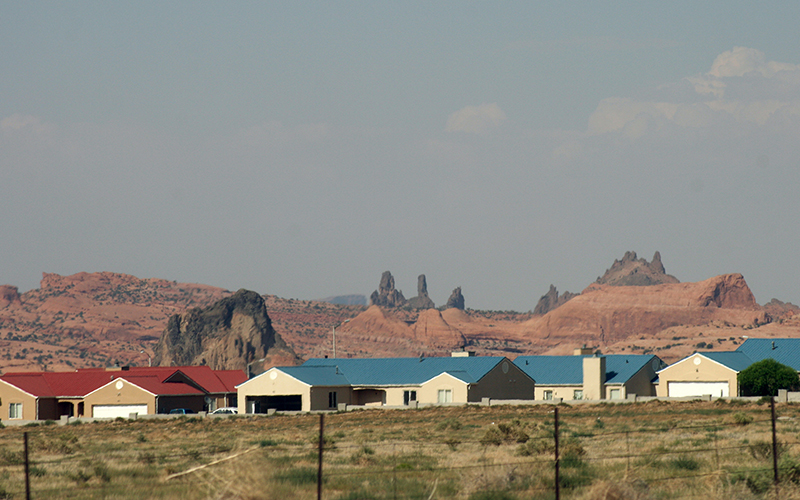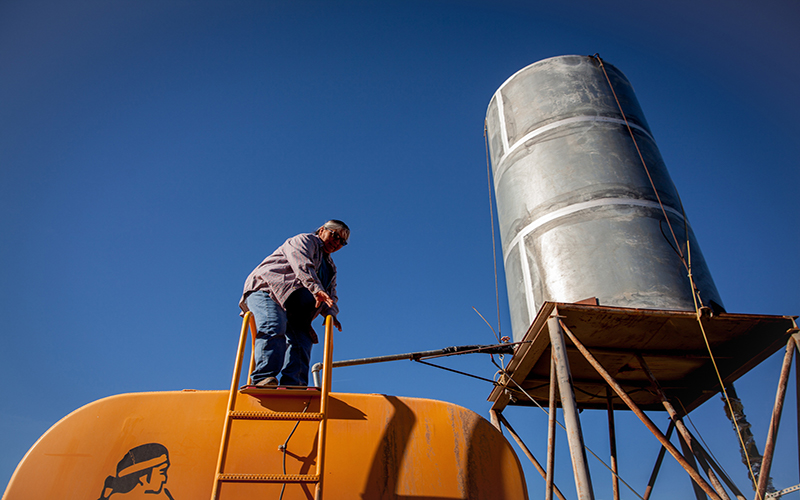
Tribes in Arizona stand to get $88 million in housing block grant funding, part of a $450 million boost to tribal housing programs that was included in the American Rescue Plan. The Navajo Nation, shown above, will get an additional $49.8 million, the most of any tribe in the nation. (Photo by Quinn Dombrowski/Creative Commons)
WASHINGTON – Tribes in Arizona will get another $88 million in housing grants – the most of any state – from the $450 million in tribal housing assistance released Thursday by the Department of Housing and Urban Development.
The national funding, which was included in the American Rescue Plan, will come in addition to the $651 million that tribes across the country were already scheduled to get in fiscal 2021 under the annual Indian Housing Block Grant.
Arizona tribes’ share of the grant rose from the original $128 million to $216 million with the extra funds from the pandemic-relief law.
HUD Secretary Marcia Fudge called the $450 million a “historic investment” in tribal housing.
“Nearly 600 tribal communities across the country will benefit from this funding, which will go toward housing development, housing modernization, housing services for families and creative approaches to provide more affordable housing in Indian Country,” Fudge said in a video announcing release of the funds.
Anthony Walters, the executive director of the National American Indian Housing Council, welcomed the funding, but said the need is still great.
“I think with the annual appropriations, tribes are only building about 1,000, maybe 1,200 new units a year,” Walters said. “There are reports out there saying that Indian Country as a whole needs 60,000 or 70,000 units, so it’s very hard to make that ground up, no matter what kind of funding we were to get today.”
The new money was distributed according to how much each tribe was scheduled to get in the original block grant for this year: Each tribe got an additional grant equal to 69% of its original.
In Arizona, new funding ranged from $35,007 each for the Tonto Apache and the Yavapai-Prescott tribe, who will now get a total of $85,641, to $49.8 million for the Navajo Nation, the largest amount in the country. The Navajo will get a total of $121.8 million with the new funding.
Navajo Nation President Jonathan Nez said he hopes “these dollars and getting our people homes built will actually help prevent the spread of COVID-19 or any future viruses.” The Navajo Nation has been racked by COVID-19, with its 30,021 cases and 1,235 deaths making it among the hardest-hit regions in the nation.
Nez said the tribe is “looking at developing a housing manufacturing plant facility that can build some of our homes,” He said he hopes this will “bring our people back, from all parts of the U.S., because they are working, they are building infrastructure for others, here’s an opportunity, bring those skilled folks back to the Navajo Nation and help build new homes for our people.”
Walters said it is not unusual for tribes to use the block grants for more than just building homes.
“Tribes across the country, they are doing rental assistance programs, mortgage assistance programs, particularly in times of COVID, you know, that money gets used up pretty quickly,” he said.
“Tribes are always kind of behind the curve on building new homes because they are doing all these other things with their funds as well, that we don’t necessarily think of when we are talking housing dollars,” Walters said.
Nez and Walters agree that the new funding is a step in the right direction. But Nez said there are still a lot that needs to be addressed on the Navajo Nation, and he hopes this push will lead to more funding in the future.
“I mean this is, just say, a good support in what we need here on the Navajo Nation,” Nez said. “But we are hopeful that we can show progress by building these homes and maybe a year down the road we can let the federal government know that these monies were used for its intended purposes, and then we will ask for additional.”

